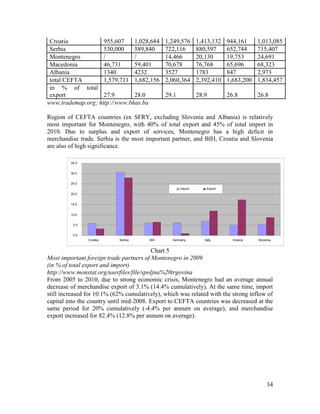The document discusses the Central European Free Trade Agreement (CEFTA) between several Balkan countries from 2007 to 2010. It finds that CEFTA helped increase trade within the region by reducing barriers, but that many non-tariff barriers still exist like complicated border procedures. CEFTA is seen as preparation for EU membership by establishing a common market. Croatia is currently the largest trader and investor, but Serbia is growing and aims to become the new economic leader as Croatia transitions to the EU. Further trade expansion is limited by outdated industries and a lack of large exporters in the region.













































